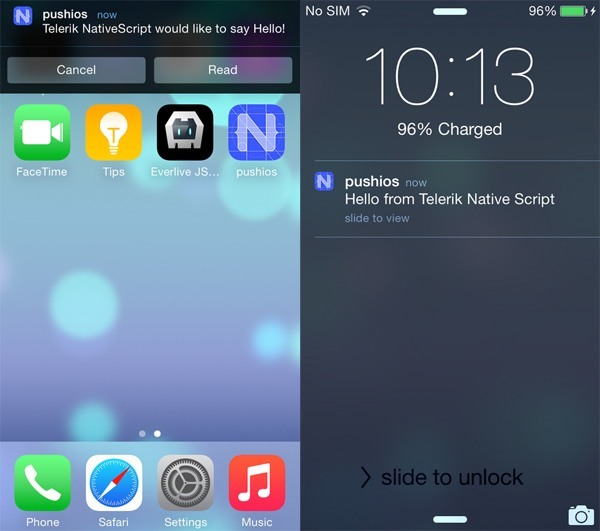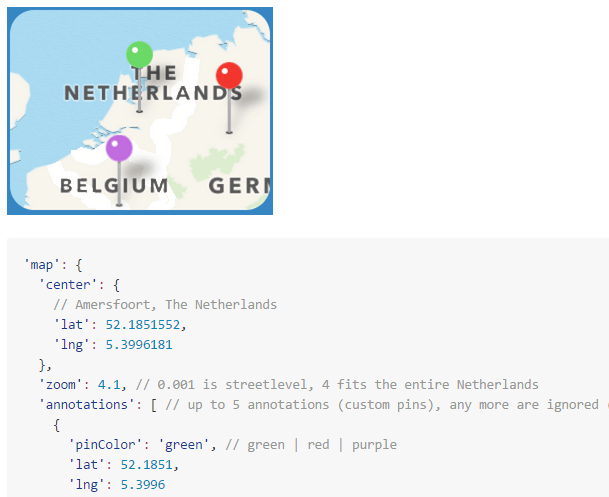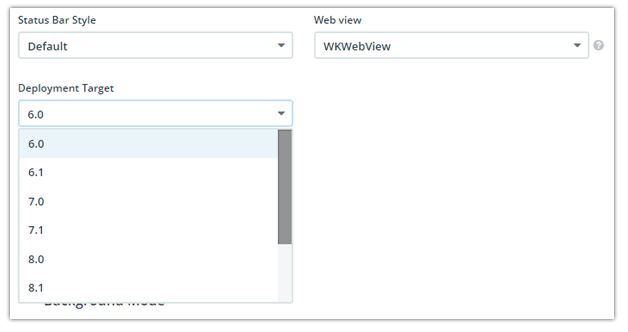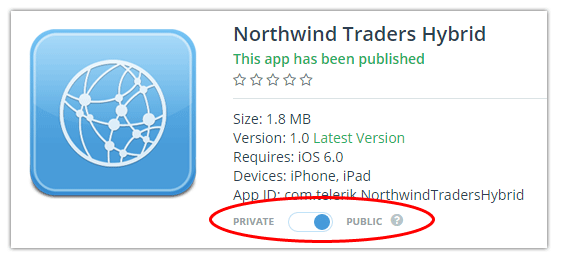What's New in Telerik Platform for August 2015
So many of you have made Telerik Platform your development platform of choice when it comes to creating hybrid, native and mobile web apps. Today we are pleased to offer you a look at the latest updates to the entire Telerik Platform. No more searching through individual blog posts to piece together what is new and exciting; here is a high level overview of what is newly available in the fastest growing product in Telerik history!
Let's Get Started!
- Automated Creation of Icons and Splashscreens
- NativeScript v1.1.2 Support
- Push Notifications Support for NativeScript
- Support for Apple Watch
- Use Cordova Plugins in the AppBuilder Companion Apps
- Choose iOS Deployment Target
- Offline Support Now with Offline Files, Caching, and More!
- Support for Stored Procedures in our Data Connectors
- Writing and Retaining Custom Code in Screen Builder
- New Global Navigation
- New Documentation for Backend Services
- Support for Progress Data Services
- App Distribution Without User Authentication
Automated Creation of Icons and Splashscreens
One of the primary pain points you identified when managing your mobile apps is the creation of the ridiculous number of icons and splashscreens for iOS, Android and Windows Phone (79 separate images at last count!). Today in AppBuilder, we handle the creation of all of these image assets for you. All you have to do is provide one high-res icon and splash screen, and the AppBuilder clients will generate all of the images!
![]()
NativeScript v1.1.2 Support
Continuing our tradition of supporting the latest and greatest from our open source NativeScript framework, all of the AppBuilder clients now support NativeScript 1.1.2. What's new in this version, you ask? Take a look at this blog post.
Remember, using NativeScript, you can write truly native mobile apps leveraging the JavaScript and CSS skills you know and love.
Push Notifications Support for NativeScript
In March, we announced that the Telerik Backend Services SDK would be fully compatible to work in NativeScript applications. Today, we are extending our support to also cover push notifications, which has been one of the most requested features for customers willing to adopt NativeScript.
To make it easier for developers to adopt any push notifications provider, we have created a dedicated push notifications plug-in that can register your device for push. Further, we have extended the JavaScript SDK of the Backend Services to work directly with the plug-in, so all supported functionality in the SDK for hybrid apps now works for NativeScript apps, as well!

Support for Apple Watch
Wearable enthusiasts rejoice! AppBuilder now provides industry-leading support for creating hybrid apps on the Apple Watch. Shortly we will release a new Cordova plugin on the Verified Plugins Marketplace that will contain all of the goodies you need. In the meantime, here is a sneak peak:

Use Cordova Plugins in the AppBuilder Companion Apps
These days, everybody seems to have a "companion app" to use when developing mobile apps. What sets the AppBuilder Companion Apps apart (aside from their ease of use and LiveSync support) is we now support some of the most used third-party Cordova plugins!
This makes it even easier for you to fully test your apps in a provision-free deployment.
Which Cordova plugins you ask?
- ActionSheet
- AdMob
- BarcodeScanner
- Calendar
- EmailComposer
- Flashlight
- KeyChain
- LocalNotification
- Native Page Transitions
- SocialSharing
- SQLite
- Toast
Not to mention the existing Telerik plugins we continue to support in our Companion Apps:
Choose iOS Deployment Target
A long-requested feature, you may now choose a specific iOS deployment target (from iOS versions 6.0 to 8.4). This means you can now target iOS 7+ devices, which are the only ones that can run apps with code written with Swift (for example, if you are using a custom Cordova plugin written in Swift).

Offline Support Now with Offline Files, Caching and More!
We are thrilled to see the number of customers creating offline-ready mobile apps. It’s a must for any serious app, and we are continuing to invest in making it super easy to take your app offline. With this release, we are introducing several important improvements in that regard to our JavaScript SDK for our Telerik Backend Services.
You can now configure the JavaScript SDK to preserve all downloaded files in the storage of the device. It will help you increase the loading time of files that have already been retrieved, and load the images much faster. We are also introducing HTML helpers to, help you integrate offline files in your existing apps easily. You should simply set the data-offline flag in your resource tag and call the process method of the SDK like this:
<img data-src="http://example.com/images/image.jpg" data-offline />
var el = new Everlive(“api-key”);
el.helpers.html.processAll();
Behind the scenes, the SDK will check whether this image is already available in the file system, and load it directly from it, otherwise it will reach out to the server and preserve it for consecutive loads.
To make things even better, the HTML Helpers are also supporting our responsive images that are dynamically re-sized for you at our servers to fit the screen size, and are served from a Content Delivery Network by simply setting the data-responsive tag in your resource like this:
<img data-src="http://example.com/images/image.jpg" data-offline data-responsive/>
With this release, you can also configure caching and expiration time for any requests that doesn’t have to be retrieved instantly from the server. You have the choice to set caching and expiration time both on a content type level or on a global level:
var el = new Everlive({
apiKey: 'your-api-key-here',
caching: {
maxAge: 120, //Global setting for maximum age of cached items in minutes. Default: 60.
typeSettings: { //Specify content type-specific settings that override the global settings.
"Countries": {
maxAge: 43200,
enabled: true
}
}
}
});
In a truly Telerik style, all of these improvements are targeted at decreasing the loading time for your users, decreasing the bandwidth footprint of your app, and increasing the satisfaction of your users with your app.
Support for Stored Procedures in our Data Connectors
Here's something that's gaining traction fast: the ability to connect directly to your SQL Server and automatically expose the tables and views you want over as web services using our Data Connectors. One of the common requests we've heard over and over is the need to support Stored Procedures, where most of the business logic of legacy systems is buried. With this release, you can expose stored procedures directly from your SQL Server to cloud endpoints that can be consumed straight from your mobile app.

The support for stored procedures comes with an easy-to-use interface to map your stored procedures and parameters, along with tools that help you execute and test your endpoints before you start integrating them in the device.
Writing and Retaining Custom Code in Screen Builder
When you generate an app with Screen Builder, it's common to enhance and modify the generated code in AppBuilder. And, until recently, if you wanted to do that but then wanted to return to Screen Builder to edit the app again (for example, to add a new or edit an existing view) without losing the custom code changes, you were in trouble--you were going to lose the changes after regenerating your app in Screen Builder.
With the latest release, we made sure that if you put your custom code changes in a dedicated area outlined by a block comment in the files generated by Screen Builder, we respect your changes and don't overwrite them! For more information, please check this help article.
![screen builder custom code] screen builder custom code]](https://d585tldpucybw.cloudfront.net/sfimages/default-source/blog-images/screen-builder-custom-code.png?sfvrsn=781974_1)
New Global Navigation
This release also introduces the new global navigation menu. You can now change the account menu straight from the account page using a dropdown menu, create account-level dashboards that can consume data from all apps within the account, and manage the deployment of all apps from a single screen.
We are also introducing a set of changes to the teams and permissions with a new developer role that can now create apps within the account. To learn more about the changes to teams and permissions, please review this forum post.

New Documentation for Backend Services
The team has rearranged the documentation for the Backend Services to help you discover and navigate among the plethora of features supported in our products. We hope that you will enjoy it.
Support for Progress Data Services
Screen Builder lets you use your own data content by connecting to a data provider. You can connect and use data hosted in our own data provider (Telerik Backend Services) or connect to your own data provider using some of the available data transport protocols like OData and REST (JSON). And, with the latest release, we added one more option: connect and use data from a Progress Data Service such as OpenEdge or Rollbase (still in the works).

App Distribution Without User Authentication
A new time-saving feature for your AppManager end users is the ability for you to turn on and off the requirement that they log in before downloading your app. So, now you can easily deploy an app to your users without forcing them to authenticate themselves. Yes, you should be aware that it's less secure, but in case security isn't as big of an issue, you can use this feature for friction-free app deployment. Read more in the last AppManager release blog post.

Summary
We sincerely hope you enjoy using some of these new features in the creation of your next great mobile app! Going forward, be sure to check out our feedback portal to help us decide what's next in Telerik Platform. If you haven't yet, be sure to sign up for a free trial today.

Rob Lauer
A maker at heart and a supporter of the open web, Rob is Developer Relations Lead at Blues Wireless. You can find Rob rambling incoherently on Twitter @RobLauer.
